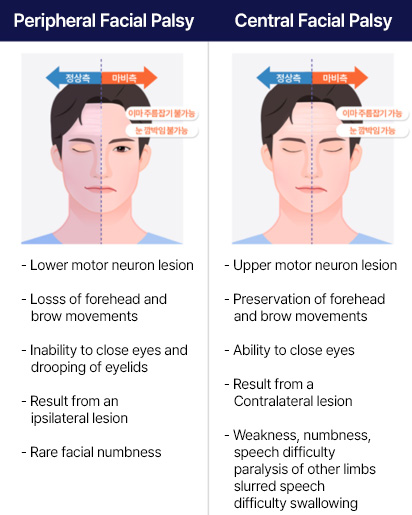Bridging Eastern & Western Medicine
How MBR Practitioners Can Help Your Recovery from Bell’s Palsy & Bring Back Your Smile
Check & See If Any of These are Applicable
How MBR Approaches Bell’s Palsy
Acupuncture has proven effective in improving and even reversing the condition of patients suffering from Bell’s palsy. According to traditional medicine, Bell’s palsy is attributed to wind exposure, which, when combined with a weakened immune system, can lead to inflammation in the affected area and blockage of Qi energy flow. At MBR Acupuncture & Herb, we employ a holistic approach utilizing a blend of herbal remedies and acupuncture techniques to alleviate this blockage and restore facial mobility.
Additionally, since Bell’s palsy is often associated with a compromised immune system, we encourage patients to enhance their immune function through a balanced lifestyle that includes adequate rest, stress management, and a nutritious diet.
Acupuncture Treatment
Electro-Acupuncture Treatment
MBR TMJ Treatment
Myofascia Release
Infrared Therapy
Moxibustion
Cupping
MBR Herb
Major contributor to migraine, neck, and shoulder pain
Bell’s Palsy Overview
Bell’s palsy is characterized by weakness and paralysis that occurs on one side of the face. It can lead to sagging or stiffness in the affected facial muscles.
This condition is attributed to inflammation of the seventh cranial nerve, which governs the movement of the entire face, including facial expressions and eyebrow movements.
Bell’s palsy can be categorized into two main types: peripheral facial nerve palsy and central facial nerve palsy. The majority of Bell’s palsy cases fall under the category of peripheral facial nerve palsy, and its precise causes remain unknown. Within peripheral facial nerve palsy, there are distinct subtypes, including Bell’s palsy and Ramsay Hunt syndrome, which is associated with the shingles virus and also lacks a clear-cut cause.
Common Bell’s Palsy symptoms:
Inability to make wrinkles on the forehead
Inability to fully close the eyelids
Drooping eyelids, dry eyes, or excessive tearing
Facial paralysis or weakness
Sagging corner of the mouth, dry mouth, or drooling
Pain within or behind the ear
Bell’s Palsy Classification
Peripheral Bell's Palsy
The exact cause of Bell’s palsy remains unknown, but it is believed to be a form of facial paralysis resulting from a viral infection affecting the 7th cranial nerve. Common viruses associated with Bell’s palsy include:
Influenza
Herpes (including cold sores and genital herpes)
Herpes zoster (responsible for chickenpox and shingles)
Epstein-Barr virus (which causes mononucleosis)
Adenovirus (linked to respiratory infections)
Mumps
Coxsackievirus (associated with hand-foot-and-mouth disease)
Lyme disease (caused by infected ticks)
Stress or overwork can also weaken the immune system, making individuals more susceptible to viral infections and increasing the risk of developing Bell’s palsy.
Central Bell's Palsy
Ramsay Hunt Syndrome
Ramsay Hunt syndrome, a condition resulting in facial paralysis, is triggered by chickenpox and herpes zoster. Unlike Bell’s palsy, the cause of Ramsay Hunt syndrome is well-established. After recovering from chickenpox, the virus remains dormant in the nerves. When the body’s immune system weakens, the virus can reactivate, affecting the facial nerve and potentially causing blisters and rashes. Ramsay Hunt syndrome typically accompanies pain around the ear and is associated with a poorer prognosis compared to Bell’s palsy, often leading to more severe complications.
The Difference between Peripheral Bell’s Palsy &
Central Bell’s Palsy

Most cases of Bell’s palsy are attributed to peripheral facial nerve palsy. However, when signs of Bell’s palsy manifest, it is crucial to initially assess for the presence of central facial nerve palsy.
In instances of central palsy, it is conceivable to observe forehead wrinkles and the ability to fully close both eyes.
Conversely, in cases of peripheral palsy, one may notice an inability to wrinkle one side of the forehead, and an incomplete closure of one eye, even when attempting to shut both eyes.
Six Stages of Bell’s Palsy
House-Brackmann Grading System
Normal
Symmetry at Rest: Normal
Characteristics: Normal facial function
Mild Dysfunction
Symmetry at Rest: Normal
Characteristics: Slight weakness noticeable on close inspection; possible very slight synkinesis.
🤨 Forehead: Moderate to good movement
👁️ Eye: Complete closure with minimal effort
💋 Mouth: Slight asymmetry
Moderate Dysfunction
Symmetry at Rest: Normal
Characteristics: Obvious but not disfiguring difference between the two sides; noticeable but not severe synkinesis.
🤨 Forehead: Slight to moderate movement
👁️ Eye: Complete closure with effort
💋 Mouth: Slightly weak with maximum effort
Moderately Severe Dysfunction
Symmetry at Rest: Normal
Characteristics: Obvious weakness and/or disfiguring asymmetry
🤨 Forehead: None
👁️ Eye: Incomplete closure
💋 Mouth: Asymmetric with maximum effort
Severe Dysfunction
Symmetry at Rest: Asymmetry
Characteristics: Only barely perceptible motion
🤨 Forehead: None
👁️ Eye: Incomplete closure
💋 Mouth: Slight movement
Total Paralysis
Symmetry at Rest: Asymmetry
Characteristics: No movement
